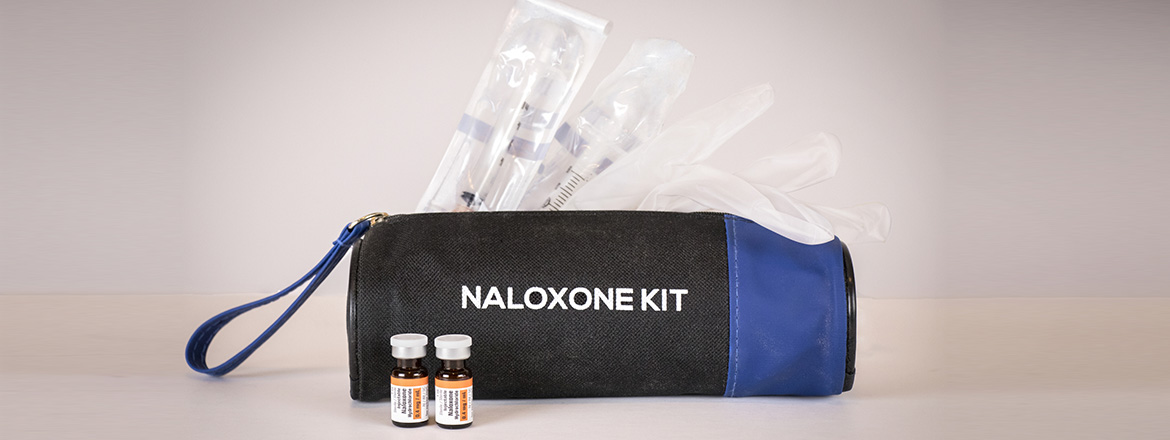
Post-disaster emergency response: Supporting people who use substances

Introduction
There have been over 30,000 recorded deaths attributed to toxic substances across Canada since 2016. The toxic drug supply has had a devastating impact on communities across Canada that has worsened throughout the COVID-19 pandemic. From April 2020–March 2022, 15,134 people in Canada died due to illicit toxic substances; this is a sharp increase from the 7,906 deaths recorded from April 2018–March 2020.
Many people engage in some form of substance use, some of which are socially normalized, such as alcohol. However, people who use currently illegal substances, those who have problematic substance use, and those with physiological substance use dependencies are more likely to be part of marginalized populations. People who have experienced trauma, such as racial or sexual violence, social exclusion, and oppression are disproportionately represented among people with substance use disorders, as are people who are experiencing poverty or housing insecurity. People who use currently illegal substances also face barriers to accessing traditional health and social services and often rely on community-based harm reduction and treatment services. There is also a long history of community care and resiliency in communities of people who use substances who have faced structural marginalization.
Along with the toxic drug supply as a public health emergency, climate change is a co-occurring threat that is increasingly and negatively impacting populations in Canada. In the past couple years alone, BC has experienced a heat dome, unprecedented wildfires, floods, and drought, all of which offer a glimpse of the increased frequency of extreme weather events that are expected under our changing climate. Environmental public health professionals (EPHPs) play an integral role in many aspects during and following extreme weather events, including being deployed as part of emergency response where they are among the first responders on the ground to ensure the safety and basic needs of the public. This will need to include people who use substances, who have unique considerations in the aftermath of a natural disaster. This article provides information relating to substance use that would be helpful in an emergency response scenario to support the important work that is done on the front lines in connecting with individuals who have been affected by natural disasters.
People who use drugs face unique risks in a natural disaster
People who use substances may experience unique risks in the event of a natural disaster, including the risk of withdrawal and of overdose. Natural disasters may disrupt the drug supply, making drugs less accessible, less affordable, and less predictable in terms of adulterants and concentrations of active ingredients. Particularly for people with physiological dependency and would otherwise experience withdrawal symptoms, this unpredictability may result in people using substances that are more potent than desired or expected, and thus carries a higher risk of drug toxicity and other negative outcomes. Natural disasters also disrupt social connections that help people who use substances manage their health risks (for example, people may use substances alone when normally they would use with others present).
Experience from other natural disasters have shown that people who use drugs may be reluctant to evacuate as it would mean relocating to an area where they are unsure where to buy what they need or what harm reduction services will be offered. There may also be a shortage of substance use equipment such as syringes, potentially leading people to share injection equipment with others, increasing the risk of blood-borne infections.
It can be expected that large-scale natural disasters will likely disrupt all medical services. Substance use services such as supervised injection/consumption sites, drug testing, and managed alcohol programs are often operated by community organizations and may be more vulnerable to disruptions and gaps in emergency communications. These substance use services, along with treatment services such as opioid agonist therapy (OAT) and methadone maintenance, are often accessed on a regular basis by (often daily) by people who use substances, which may be a monumental task if transportation routes and services are disrupted due to a natural disaster. Without these services, people may choose to delay taking their substances or medications or reduce their daily dose in order to extend their supply, both actions possibly resulting in withdrawal symptoms. These services also act as a significant source of social support for people who use substances, and their disruption creates a gap in practical non-substance related supports for the people they serve.
A harm reduction approach
In public health, substance use is approached within the framework of harm reduction, which aims to minimize risks associated with substance use rather than aiming for individuals to abstain from substance use in all scenarios. Withdrawal and overdose are both dangerous scenarios for people who use drugs that can cause serious health complications and even death. In an emergency scenario, it is necessary to assist individuals with their immediate needs of preventing withdrawal and overdose rather than initiating any new treatment protocols aimed at reducing substance use.
Measures taken during the COVID-19 pandemic provide a good example of harm reduction measures that were taken to ensure that people who used substances were able to continue to access safe substances and avoid withdrawal and overdose. The Province of British Columbia introduced risk mitigation prescribing that allowed clinicians to prescribe substances similar to what they would access through the illicit drug supply so that individuals could follow public health mandates and avoid unfamiliar sources of drugs. Liquor stores were also kept open during lockdowns as an essential service to support individuals with alcohol use disorders to access lower-risk forms of alcohol to avoid withdrawal.
There is evidence that flexibility in providing substance use services is an effective way to mitigate the harms of withdrawal and overdose that may be exacerbated in an emergency scenario. Communication with regulatory agencies is critical to ensure that flexibility is implemented within clinical guidelines and to avoid confusion between those providing substance use services on the front line. It is also essential to communicate any changes to people who use substances to support continued access.
The role of EPHPs in supporting people who use substances
EPHPs are often involved in emergency response scenarios by interacting directly with the public, coordinating emergency response, and be part of a team for implementing emergency shelters. While not directly involved with clinical care provision, EPHPs will likely work closely with other agencies involved in coordinating medical care, including substance use services. Building an awareness of the unique needs of people who use substances and being able to direct them to relevant services is one way that EPHPs can provide support. In the absence of substance use services such as supervised injection sites, EPHPs can support the development of an episodic overdose prevention service (eOPS) as part of emergency shelters. This is a separate and private area that supports safe substance use with naloxone and a trained overdose responder available. This area is also as sterile as possible with access to clean water to reduce risk of infections. The eOPS should also be set up to support adequate ventilation for those who wish to smoke their substances, such as a tent two sides left open for air flow. EPHPs can also advocate for harm reduction supplies such as sterile needles and naloxone kits to be provided in emergency shelters, and take naloxone training themselves to learn how to administer naloxone for someone experiencing an overdose.
To be noted is the importance for EPHPs to approach personal interactions with an equity perspective. This entails an understanding that people who use substances are often marginalized and stigmatized for their substance use. Stigma involves applying stereotypes or shame to individuals in a discriminatory way, and can prevent people who use substances from accessing help that they need. Stigma can be reduced by using person-first language when talking with and about people who use substances, and by using language that recognizes the medical nature of substance use rather than slang terms. There are online resources such as the Canadian Centre on Substance Use and Addiction course Overcoming Stigma that provide a more in-depth perspective on stigma and substance use.
EPHPs can also employ a trauma-informed approach in personal interactions with people who use substances. This refers to a recognition that past trauma can make people more vulnerable in scenarios where they experience a loss of control, as would likely be the case in the aftermath of a natural disaster. In this case, it is essential to ensure that people who use substances feel they are in a space that is physically and emotionally safe. This requires the use of a non-judgmental, empathetic, and non-stigmatizing communication approach.
In coordinating with emergency response agencies, it is also important to build and foster trust with people who use substances and their communities. Historically, people who use substances have been disenfranchised and may have low levels of trust in medical, government, and law enforcement personnel. However, many cities and towns in BC have close-knit communities of people who use substances with organizations that are active in advocating for and providing substance use services. In an emergency scenario, these organizations are likely who people who use substances would turn to for guidance on where to access substances and substance use services, and thus should be a crucial part of emergency response. EPHPs can prioritize the reopening of these organizations after a natural disaster, especially if they have physical spaces that can be used to provide supports for people using substances. This partnership work can begin as part of emergency preparedness efforts as well, which can help to empower communities of people who use substances to plan for their own needs in natural disaster events and have a voice in decision-making.
Conclusion
People who use substances have unique needs that are likely to be exacerbated in the aftermath of a natural disaster due to an unpredictable drug supply and disruption to community-based substance use services. As EPHPs are often on the front lines as part of emergency response, they can provide support for people who use substances. EPHPs can continue to build trust within the community of people who use substances and advocate for their needs as part of emergency planning and on the front line as part of emergency response. The increasing frequency and severity of extreme weather experienced in Canada highlights an urgent need for inclusive emergency planning to ensure that there is capacity to respond to the needs of all members of impacted communities.
The author gratefully acknowledges the valuable input offered by Dr. Alexis Crabtree (Substance Use and Harm Reduction, BCCDC) in reviewing this article. This blog is adapted from an article that was originally published in the Fall 2022 issue of BC Page, the CIPHI BC quarterly newsletter.
Author
Kelsey James is an EH & KT Scientist at the NCCEH.




